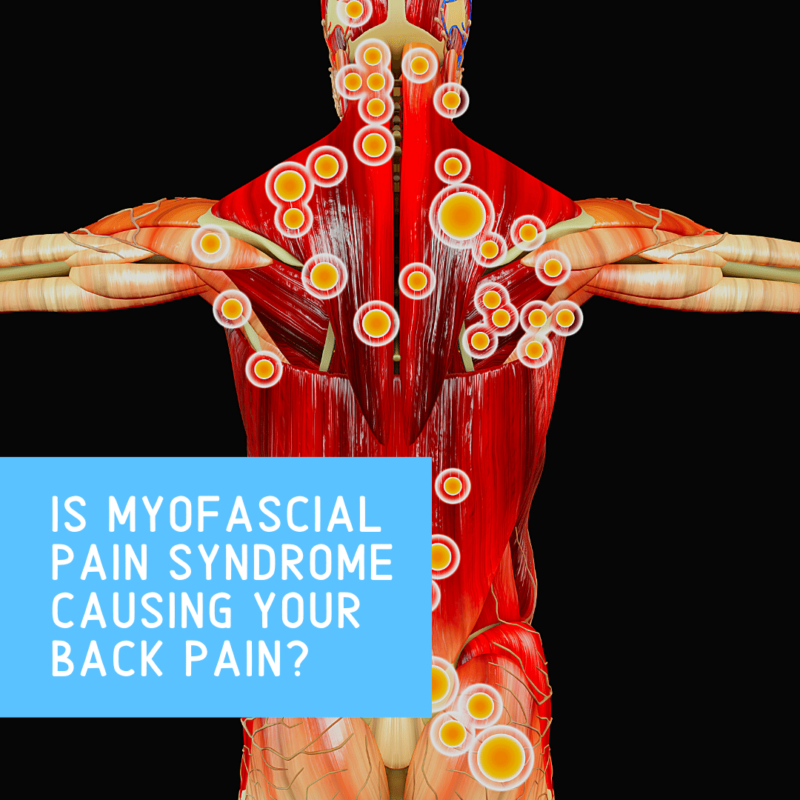Just about everyone experiences back pain at some point in their life. Some people, in particular, have chronic back and neck pain. Chronic back and neck pain can be caused by a variety of spinal, musculoskeletal, and neurological conditions. One type of musculoskeletal condition is known as myofascial pain syndrome and it may just be the explanation for your chronic back pain. In fact, myofascial pain syndrome is extremely common and affects an estimated 44 million Americans.
Myofascial pain occurs in the muscles (myo-) and fascia, which are the thick bands of connective tissue that hold muscles together, and connect them to certain organs. It is characterized by pain that is localized to trigger points, or areas of tenderness and stiffness. Sometimes referred to as “muscle knots”, these trigger points are areas where the muscle becomes so tight that it cuts off its own blood supply. The results are muscle pain, tenderness, tightness, and muscle spasms. In some cases, trigger points can also cause referred pain, or pain that travels or spreads to a nearby location.
There are two different types of trigger points associated with myofascial pain syndrome. Namely, they are latent and active trigger points:

- Latent trigger points are those that only cause pain when pressure is applied. In some cases, latent trigger points may also reduce your range of motion.
- Active trigger points, on the other hand, cause pain at any given moment
Although latent trigger points are not painful unless pressure is applied to them, it is possible for latent trigger points to become active. Some common things that can make latent trigger points active are prolonged periods of poor posture, mental and emotional stress, and spinal injury or trauma.
It is also important to note that trigger points are not the same thing as the tender points associated with fibromyalgia. With fibromyalgia, tender points are localized areas of pain that do not cause referred pain and occur on both sides of the body. Trigger points, on the other hand, are known for causing referred pain and do not occur symmetrically.
When it comes to your spine, the most common location for spinal trigger points is within the trapezius muscle that spans from the back of the neck across the shoulders and upper back. This muscle is commonly affected by trigger points because of its susceptibility to spinal trauma, as well as its frequent weight bearing while holding things. It can also be dramatically affected by poor posture.
How is myofascial pain syndrome treated?
If it sounds like you could be affected by myofascial pain syndrome, at this point you are probably wondering how you treat this condition. While research is still ongoing, it has been found that a multidisciplinary treatment plan generally has the best results. However, this can vary based on your individual case, so you should discuss this with your spinal specialist. At a glance, here are some of the most common treatments for myofascial pain syndrome:
- Myofascial release therapy
- Over the counter pain medications
- Physical therapy
- Massage therapy
- Acupuncture
- Trigger point injections
- Lifestyle changes











 in CA by O360®
in CA by O360®